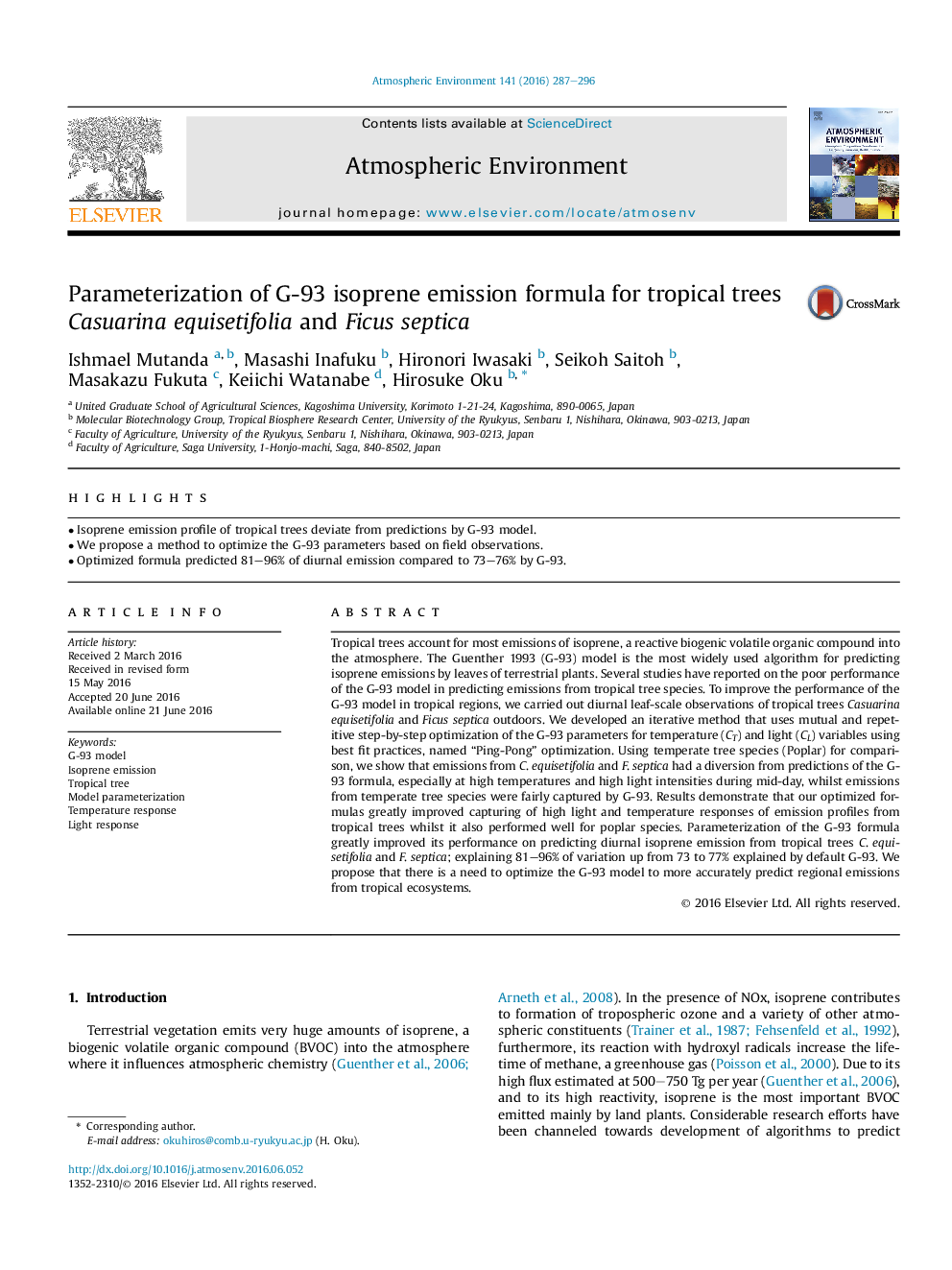| Article ID | Journal | Published Year | Pages | File Type |
|---|---|---|---|---|
| 6336042 | Atmospheric Environment | 2016 | 10 Pages |
Abstract
Tropical trees account for most emissions of isoprene, a reactive biogenic volatile organic compound into the atmosphere. The Guenther 1993 (G-93) model is the most widely used algorithm for predicting isoprene emissions by leaves of terrestrial plants. Several studies have reported on the poor performance of the G-93 model in predicting emissions from tropical tree species. To improve the performance of the G-93 model in tropical regions, we carried out diurnal leaf-scale observations of tropical trees Casuarina equisetifolia and Ficus septica outdoors. We developed an iterative method that uses mutual and repetitive step-by-step optimization of the G-93 parameters for temperature (CT) and light (CL) variables using best fit practices, named “Ping-Pong” optimization. Using temperate tree species (Poplar) for comparison, we show that emissions from C. equisetifolia and F. septica had a diversion from predictions of the G-93 formula, especially at high temperatures and high light intensities during mid-day, whilst emissions from temperate tree species were fairly captured by G-93. Results demonstrate that our optimized formulas greatly improved capturing of high light and temperature responses of emission profiles from tropical trees whilst it also performed well for poplar species. Parameterization of the G-93 formula greatly improved its performance on predicting diurnal isoprene emission from tropical trees C. equisetifolia and F. septica; explaining 81-96% of variation up from 73 to 77% explained by default G-93. We propose that there is a need to optimize the G-93 model to more accurately predict regional emissions from tropical ecosystems.
Related Topics
Physical Sciences and Engineering
Earth and Planetary Sciences
Atmospheric Science
Authors
Ishmael Mutanda, Masashi Inafuku, Hironori Iwasaki, Seikoh Saitoh, Masakazu Fukuta, Keiichi Watanabe, Hirosuke Oku,
